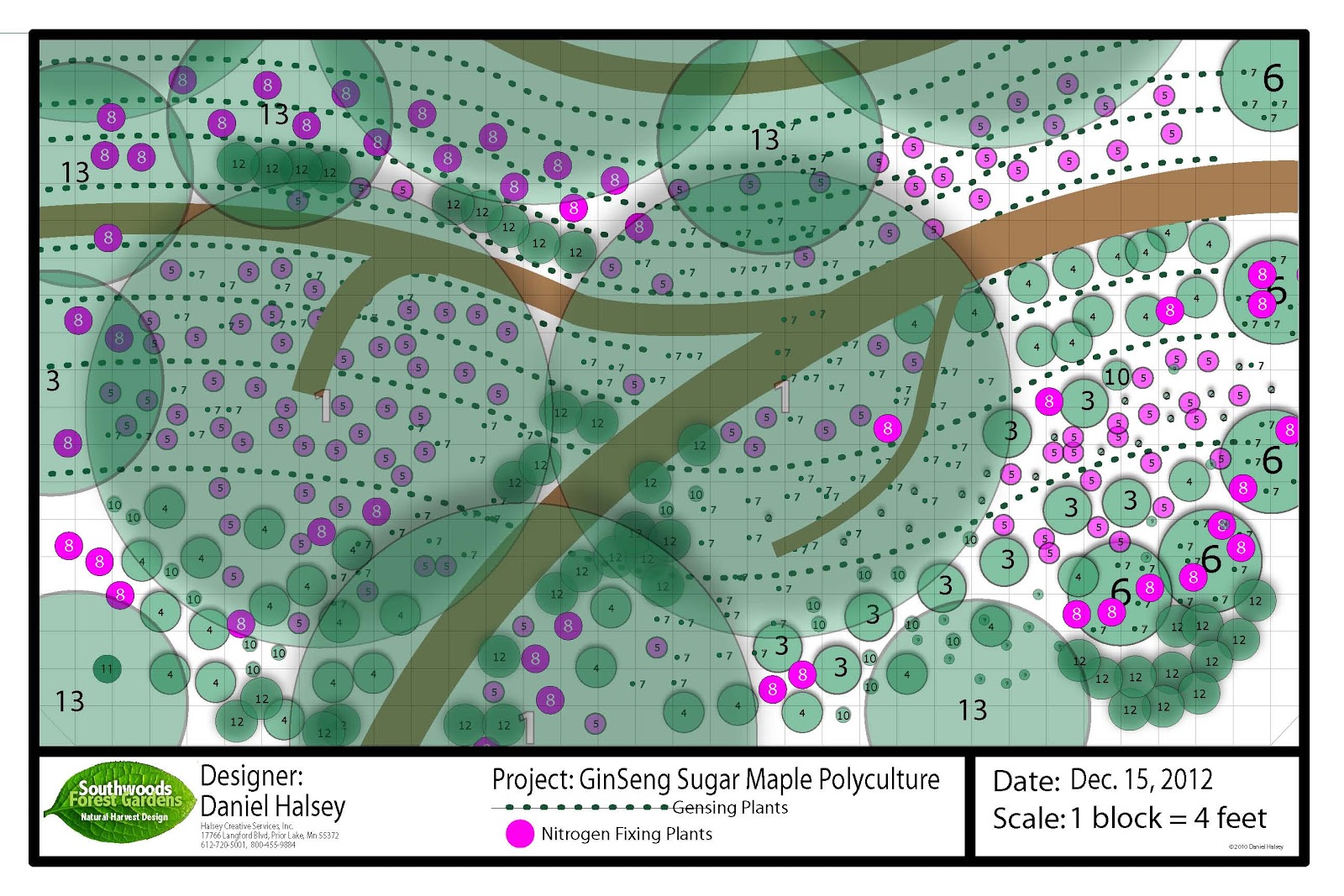Growing Medicinal Herbs in a Woodland Polyculture More...

Abstract: When individuals first learn about a new plant, many of them immediately are excited to have the plant in their landscape and look for a source of seeds and/or transplants to do so. What’s missing in many of these limitations is the fact that all plants grow in ecology of companion plants. The niche in which a species grows is filled with other plants that support it and the soil ecology. Taking a plant out of its natural environment and isolating it in pots or planting beds removes it from the supporting mechanisms that facilitate its growth. This is followed by reduced yields, disease, and reduction of the phytonutrients it might supply to its consumer. Cultivating these plants within a supporting ecology where all ecological functions are present and filled by plants with those functional roles may seem to reduce the yield, except for the fact that yields in aggregate of all the associated plants far exceeds that of the one.
Building a forest polyculture of any kind requires a considerable amount of planning and many sources of material to research the niche and species available to deliver human uses and ecological services. Keeping the final plant list to a minimum for the initial placement of the ecologically functioning species will help build a functional structure. After the initial 9 to 12 species are in place, including the over story, a number of shrubs, companion perennials, and a groundcover species, other plant species can be added.
Combining Chinese medicinal herbs into an existing ecological system of natural plant Associates increases the diversity of plant species, but also the disturbance regime frequency. If human harvesting is increased in the forest poly culture, ecologically supportive plants should also be increased. Nitrogen fixers, dynamic accumulators, and nurse plants will mitigate the removal of nutrients. It should be suggested that small patches of plants be implemented and studied prior to any large change in a forest ecosystem, that being said, the forest plants should be augmented with increased diversity, but still had a much smaller proportion than what already exists.

Please note: Some feedback I have received about the invasive nature of some species is based on local conditions. The structure of the polyculture can be used for many species and as always, all solutions are site specific. No native plants were harmed in the implementation of this polyculture.


